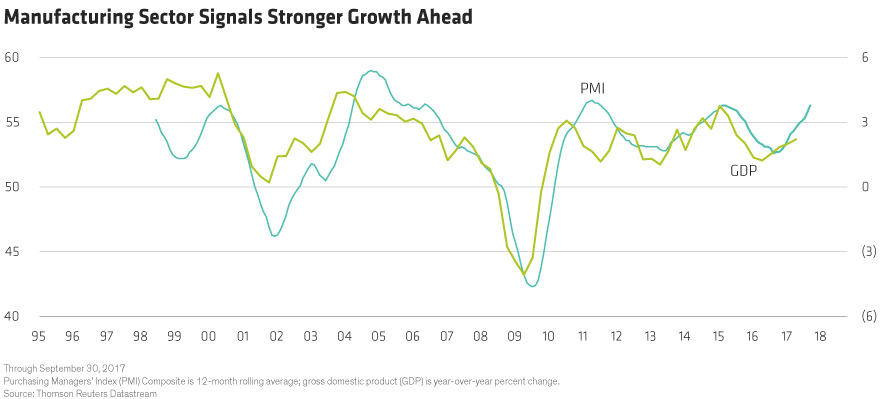by Doug Kass, Seabreeze Partners Management
There is a wide disconnect between the current market’s focus on short-term influences and the long-term and worrisome trends in pension obligations, spiraling debt, the wealth/income gap and the Fed’s ability to extricate itself from its large balance sheet.
“I’d say get it while you can, yeah
Honey, get it while you can, yeah
Hey hey, get it while you can
Don’t you turn your back on love, no, noDon’t you know when you’re loving anybody, baby
You’re taking a gamble on a little sorrow
But then who cares, baby
‘Cause we may not be here tomorrow, no.”–Janis Joplin, “Get It While You Can“
We live in a not-so-brave world in which time frames have been increasingly compressed, owing in part to the impact of technology on human behavior. It is as if almost everyone these days has ADHD, or attention-deficit hyperactivity disorder.
This short-term behavior permeates our society as physical human interaction is diminished in a world of Twitter, Instagram and Snapchat.
Even politics is subverted to the short term. For example, politicians are elected and almost the next day they have begun to campaign and raise money for their next election. Another example of the short-term orientation and subversion of longer-term thinking is seen in President Trump’s impulsive, possibly dangerous and seat-of-the-pants tweeting, which is now being “normalized,” as an expression of delivering policy that in the past has been conducted in a far more contemplative way. Or even in Anthony Weiner’s sexting!
Nowhere is the compression of time frames more apparent than in the investment business, where it seems that everyone has become a day trader.
As it is said, market opinions are like noses — everyone has one!
The business media spends most of their time asking the talking heads questions that are likely to be responded to without much rigor because it’s easier looking at a price chart or monitoring “unusual call activity” in making short-term trading decisions than employing fundamental analysis that is time-consumptive and laborious.
Among the usual questions:
- Where are interest rates going by year-end?
- What is the next 50-handle move in the S&P Index?
- How will XYZ Co.’s shares respond to this afternoon’s earnings report?
- What is the next move in the U.S. dollar, the price of oil, in soybeans or in the emerging market space?
The limited discussion and consideration of intermediate to longer-term prospects — such as whether we are pulling investment returns forward — may be a technologically influenced event or may be the desire, as Janis Joplin reminded us all, of “getting it while we can.”
Or it might be the byproduct of the continuing eight-year bull market in which dips are ever bought.
Regardless, current prices always must be measured and judged not only by the next near-term variable (such as interest rates, earnings and the price of oil), but also by the assessment of the intermediate to longer term.
And it is the longer term that to me and to some others is where the greatest concerns lie for investors today.
These longer-term concerns seem to have been ignored by most market participants and by the machines, algorithms and ETFs, which have been fueled by large inflows that have translated into the virtuous market cycle I recently wrote about in “Active vs. Passive Conflict, and Why All Dips Are Bought.”
Stated simply, passive investing is agnostic to long-term fundamentals such as private market value and secular earnings growth projections. One can spend weeks discussing these profound headwinds and challenges, and I will follow up on them in the time ahead by expanding on my non short-term concerns. However, here are the four leading issues as seen in my eyes with a big, big assist from my friend, Outside the Box’s rigorous John Mauldin (the first two issues):
* Uncle Sam’s Unfunded Promises: The Trump administration’s tax plan is not a plan. It is a melange of ideas put forth without precision or arithmetic. Any possible supply-side benefits of the tax proposal must be weighed against the dampening impact of future deficits on economic growth
* The Screwflation of the Middle Class: A longstanding concern of mine, the continued income and wealth gap and the likely continued failure of “trickle-down economics,” holds important and adverse social, political and economic ramifications.
* The Fed’s Role and Its Effect on the Markets The bullish cabal is taking an incredible leap of faith that the Fed’s tightening cycle is going to be without hiccup and essentially have been brainwashed by not just the Fed but by the actions of all central banks in believing that every slip-up will be fully rectified. The central banks believe they have cured the diseases called “bear market” and recession and convinced us that we are in a new paradigm. I would argue that this is likely a big mistake, as evidenced by the numerous policy boners by the Fed in the last one to two decades.
Bottom Line
“A bull market is like sex. It feels best just before it ends.” –Warren Buffett
We live in a world of instant gratification.
Basing investments on short-term influences and worshiping at the altar of price momentum can be profitable, but it obscures our attention from long-term trends, many of which are potentially quite adverse.
The long term can be seen as a collection of short terms; the long term is little discussed as the investment debate principally is governed by questions regarding near-term market and price movements, in which market participants try to “get it while they can.”
There is a wide disconnect between the current market’s high valuations and focus on short-term influences and the long-term and worrisome trends in pension obligations, spiraling debt, the wealth/income gap and the Fed’s ability to extricate itself from its large balance sheet.
Copyright © Seabreeze Partners Management














